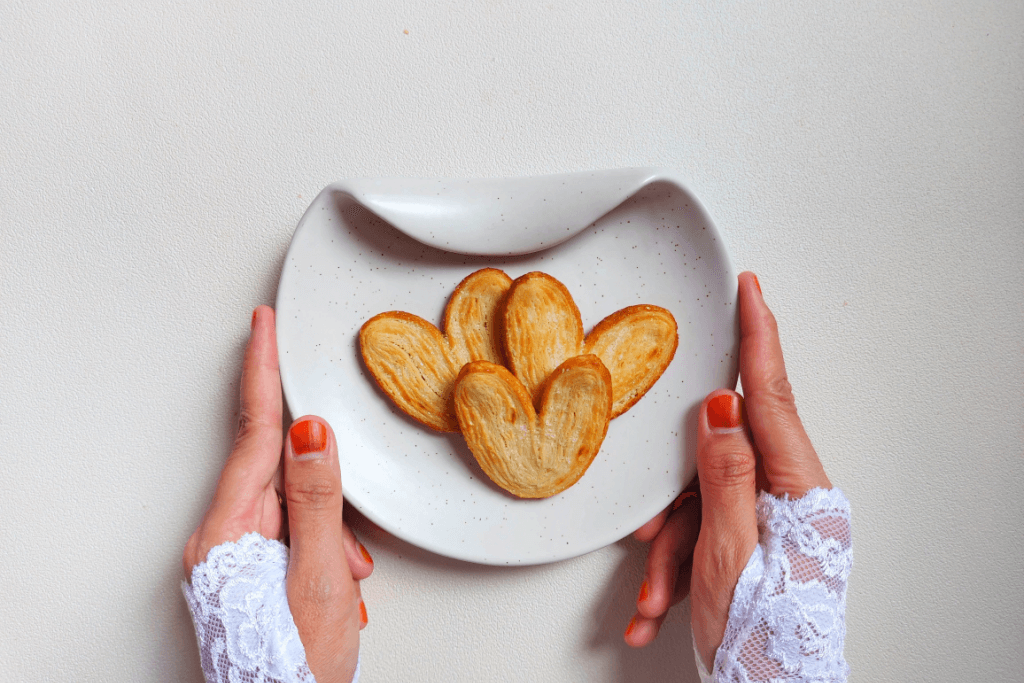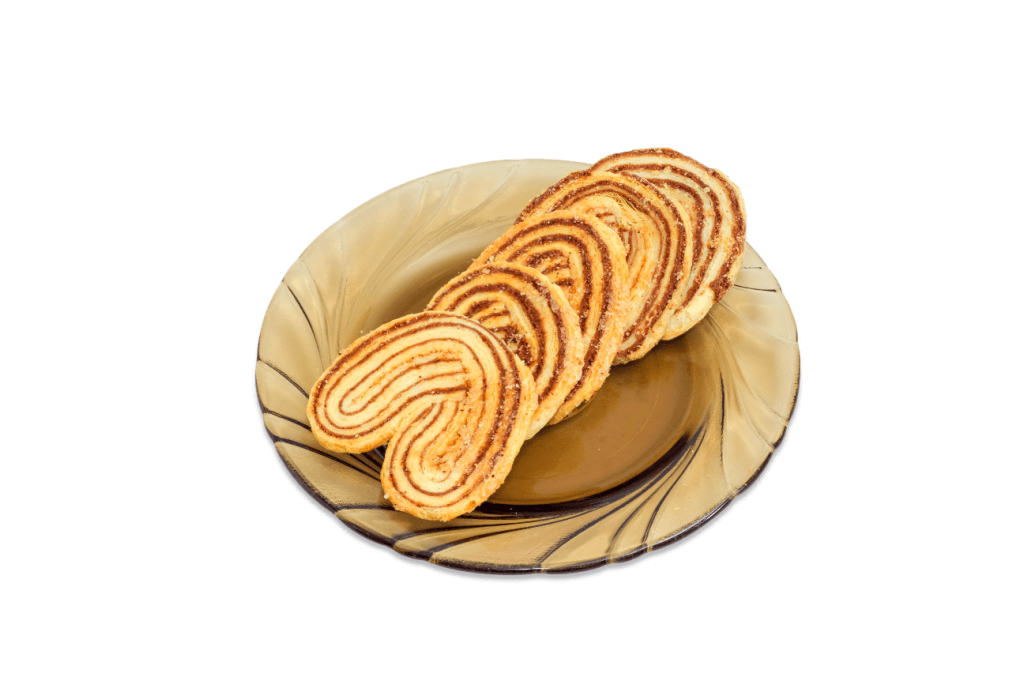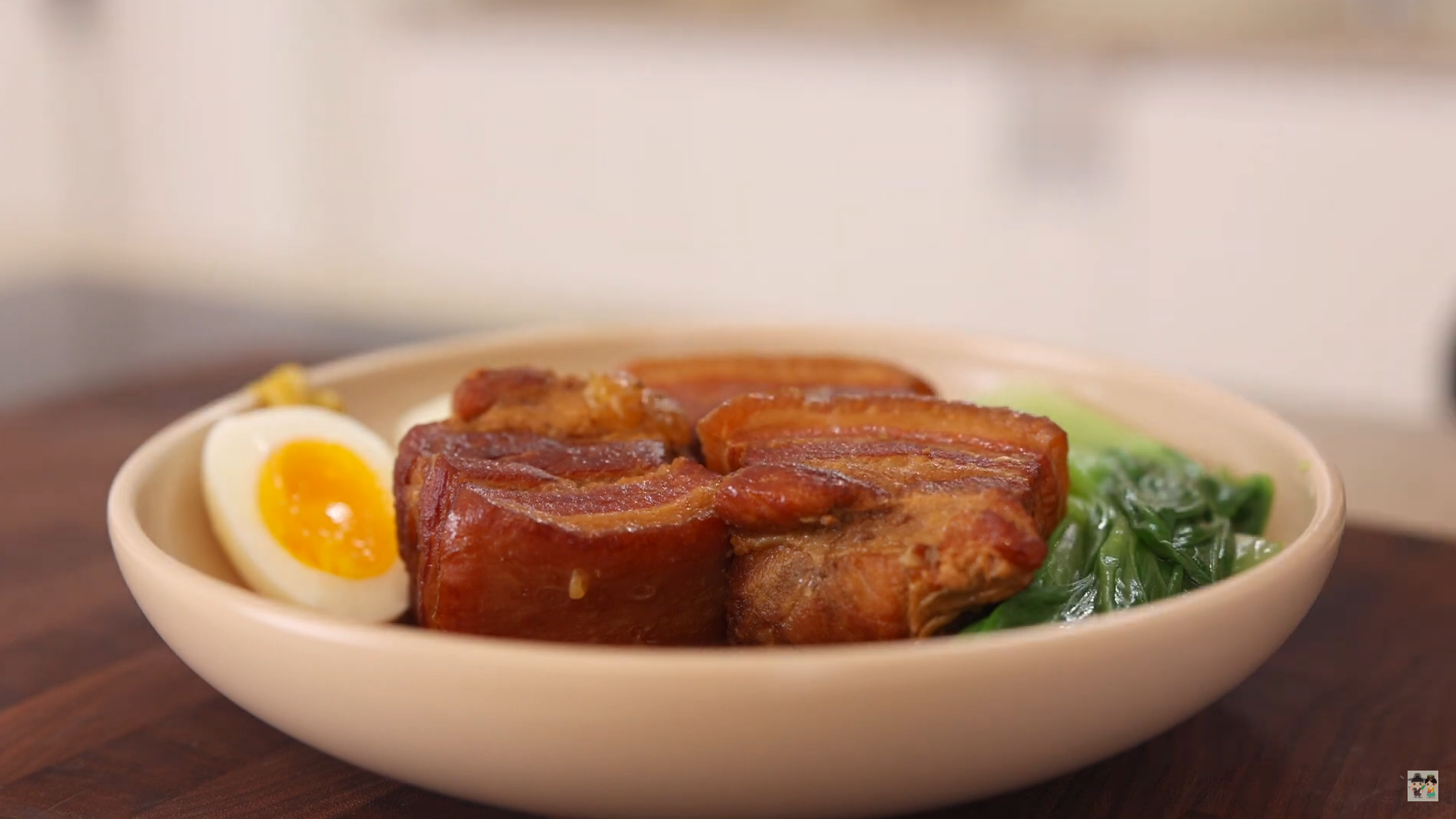japanese food, japanese pies, Japanese sweets
Japanese Pies: Everything You Need To Know About These Delicious Cookies!
Karina Ikedo
Posted on April 12, 2023
Share:

Japanese pies, or Genji Pies, are long-selling pastry snacks that originated in 1965. They are delicious Japanese cookies that are popular among people of all ages. In Japan, it is common to see pies with no filling. The cookies use many layers of pie dough rolled and shaped like a heart.
Genji Pie is a beloved snack in Japan that has been around for years. Its delicate sweetness and crispy texture make it popular among locals and tourists. These cookies are a go-to souvenir and have many wonderful flavors. Keep reading to discover this lesser-known, delicious snack!
What are Japanese Pies? (Genji Pie)
Generally, Genji Pie has a lot in common with traditional French palmier cookies. To put it differently, these flaky pastry snacks have a subtle shine, thanks to the sugar syrup glaze that gives them their sweetness. Unlike some Japanese sweets, Genji Pie is a casual, everyday snack at most supermarkets.

Genji pies come in small boxes of two and larger volumes, such as transparent bags containing 28 pieces. The larger packages contain separately wrapped pies that are perfect for storage and remain fresh when opened.
The Origin of Japanese Pies
Sanritsu Confectionery Co. opened in 1921 and manufactured baked goods and snacks such as biscuits, crackers, and pretzels. The company introduced the first Genji Pie in 1965, and it is still a well-loved sweet treat today. All in all, Sanritsu successfully imitated palmiers to create Japan’s Genji Pie.

Why is it called “Genji Pie”?
Sanritsu wanted to give this delicacy a particularly Japanese-style name. The name comes from the NHK’s famous historical drama, Minamoto no Yoshitsune. He is the main protagonist of the Genji series. Following the popularity of historical dramas, many Japanese people started buying the Genji Pie in stores.
Looking for a delightful, sweet treat? Check out Sakuraco! Sakuraco delivers traditional Japanese snacks, teas, sweets, and snacks from local Japanese makers directly to your door so you can enjoy the latest sweet treats directly from Japan!
How does it taste?
In this case, the secret to the Genji Pie’s delectable texture lies in its preparation. The pie dough is carefully folded into layers and baked slowly to achieve its delicate, crumbly texture. Afterward, the pie melts in your mouth with each buttery bite, and the thin, sugary coating provides just the right sweetness.

It has a crispy grilled finish and fragrance. Genji Pie is made with premium flour, margarine, and sugar, then baked in a manner that gives it a delicious, homemade taste. Its subtle sweetness, satisfying flavor, and crisp texture have made it a beloved favorite.
Elegant Flavored Genji Pies
With their crispy texture and sweet flavors, it’s no wonder why Genji Pies are a crowd favorite. But which flavor should you choose? With this in mind, our top picks will satisfy your taste buds: Kneaded Chocolate, Piano Brown, and Salty Caramel. Trust us; you won’t regret trying any of these irresistible flavors!
Kneaded Chocolate
Genji Pie has a delicate texture that crumbles as you bite into it. When combined with the rich chocolate, it becomes even more delectable. Enjoy the delicious chocolate flavor mixed into the layers of these sugar pie biscuits!

Japanese chocolate is kneaded into the dough, and coarsely crushed cacao beans are rolled up between the layers of dough. Generally, you can pair this chocolate Genji Pie with your favorite cup of hot tea for a delightful afternoon tea.
Piano Brown
This mouth-watering pastry boasts a delectable maple flavor and a crispy, golden glaze. You won’t be able to resist its perfect balance of sweetness and crunch. The use of maple sugar rolled into the dough makes it even more remarkable.

The rich maple sugar gives it a rich buttery taste. When it comes to presentation, the Piano Brown pie is a sight to behold. The elegant wood grain piano design on the packaging makes it the perfect souvenir to take home.
Salty Caramel
This salted caramel-flavored Genji Pie has a crispy texture and rich buttery notes. The dough is kneaded with caramel powder and accented with Alpensanz rock salt to give it a rich caramel sweetness!

This heart-shaped cookie has been a favorite for many years. Sanritsu first created Japan’s Genji Pie in 1965, and it’s been popular ever since. Pie dough is rolled and shaped like a heart with flaky pastry layers. The pie-like crust of these cookies is carefully baked into multiple delicate layers making it an irresistible treat. These Japanese pies have become a famous version of French palmier pastries.
Have you tried these Japanese pies before? Do you have a favorite flavor? Let us know in the comments below!

Discover authentic flavors with Sakuraco
Get Sakuraco 

Discover authentic flavors with Sakuraco
Get Sakuraco 
Related Articles

Aaron and Claire Make the Ultimate Japanese Pork Belly: Buta no Kakuni
If you want a Japanese dish that’s rich, tender, and simple to follow, Aaron and Claire show exactly how to make it in this episode. Aaron prepares Buta no Kakuni, a classic braised pork belly dish renowned for its rich flavor and tender texture.

Japan Christmas Traditions: Best Luxury Dinners in 2025!
Finding a memorable Christmas dinner in Japan can range from relaxed hotel buffets to refined multi-course experiences. Celebrating over dinner is considered a classic alongside other Christmas traditions, such as KFC.

Aaron and Claire Make the Best Japanese Comfort Food: Yakisoba
If you’re craving something quick, satisfying, and full of flavor, Aaron and Claire have you covered. In this video, Aaron shares how to make yakisoba, a simple Japanese stir-fried noodle dish that’s easy to cook and incredibly addictive. Forget the instant packs or greasy takeout, this homemade version is fresh, flavorful, and the kind of…

Mitarashi Dango: Japan’s Sweet and Savory Rice Treat
If you’ve ever visited Japan or seen photos of its food, you might have spotted little rice dumplings on a stick. These chewy treats are called mitarashi dango, and they’re one of Japan’s most beloved traditional sweets.



